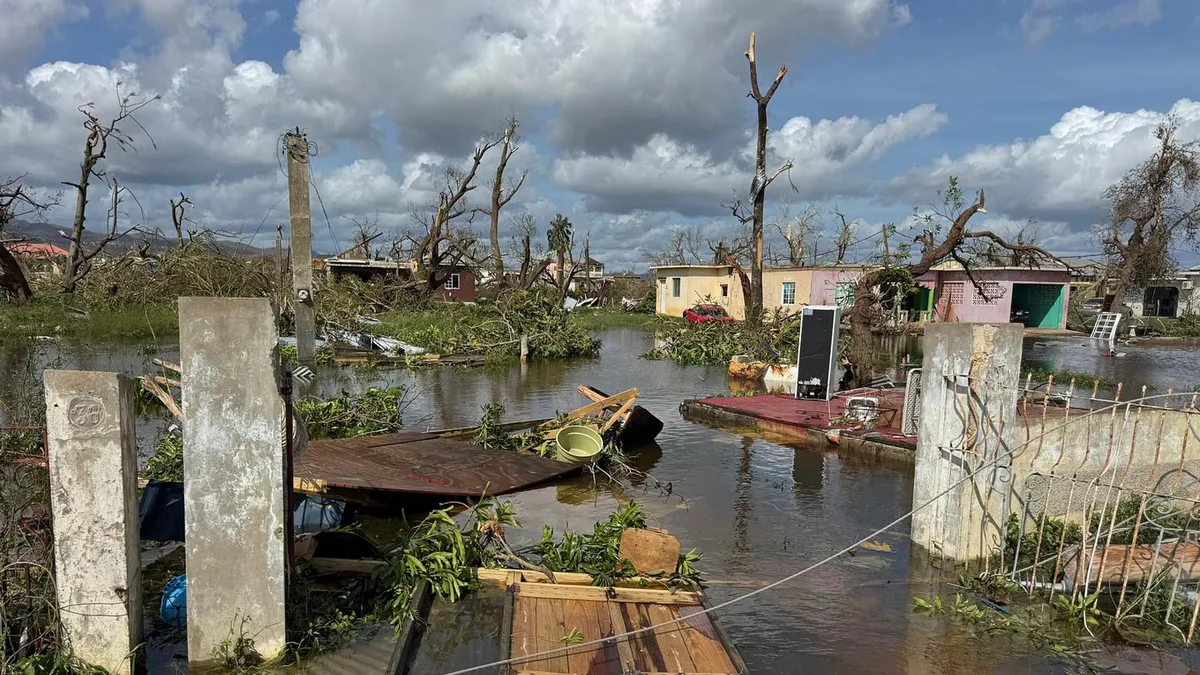
The National Hurricane Center officially declared Hurricane Melissa post-tropical in its 11 a.m. EDT advisory on Friday, marking the end of a historic 10-day journey that wreaked havoc across the Caribbean. Melissa made its closest approach to Bermuda near midnight on Thursday, passing approximately 130 miles (210 km) west of the island. At that time, the storm was transitioning from a Category 2 hurricane, with winds of 100 mph (160 km/h), to a Category 1, with winds reduced to 90 mph (145 km/h).
Winds gusted to 69 mph at Bermuda’s L. F. Wade International Airport, while an elevated weather station at the National Museum of Bermuda recorded a remarkable 99 mph gust at an altitude of 115 ft. (35 m). As of early Friday morning, approximately half of Bermuda was without power; however, there were no reports of major incidents according to a government update.
Earlier in its trajectory, Hurricane Melissa passed near the southern tip of Long Island in the Bahamas at around 5 p.m. EDT on October 29 as a Category 1 storm with sustained winds of 90 mph (145 km/h) and a central pressure of 974 mb. Earlier that day, at 3:10 a.m. EDT, Melissa made landfall in the eastern Cuban province of Santiago de Cuba, approximately 40 miles (65 km) west of the city, as a powerful Category 3 hurricane with winds of 120 mph (195 km/h) and a central pressure of 952 mb.
Melissa’s initial landfall occurred in western Jamaica at 1 p.m. EDT on October 28, registering as a Category 5 hurricane with winds reaching an astonishing 185 mph (300 km/h) and a central pressure of 892 mb. This strength ties Melissa with the infamous 1935 Labor Day Hurricane in the Florida Keys as the strongest landfalling Atlantic hurricane on record.
As an extratropical storm, Melissa is projected to pass within 100 miles southeast of Newfoundland, Canada, near midnight on Friday, with sustained winds between 75-80 mph (120-130 km/h). While Newfoundland will be positioned on the weaker side of the storm, it is expected to experience heavy rainfall of 1-3 inches (25-75 mm) over the weekend due to a flow of moist air ahead of the storm, combined with another separate storm system.
The full extent of Hurricane Melissa's impact on the Caribbean remains difficult to ascertain. Reports indicate that at least 60 fatalities have been attributed to the storm: 30 in Haiti—20 of whom perished in Petit-Goâve after a river flooded and burst its banks; four in the Dominican Republic; 22 in Jamaica (including three indirect deaths); and four in Panama. Many affected areas remain inaccessible, suggesting that the death toll may unfortunately rise.
While Melissa is the most devastating hurricane to impact Jamaica since records began in 1851, it draws parallels to a historical storm from 1780. This hurricane, though likely weaker, followed a similar path and struck western Jamaica, devastating the port city of Savanna-la-Mar. As noted in research by NOAA and hurricane scientist Dr. Kerry Emanuel, many villagers were drawn to the shore, only to be engulfed by the rapidly rising storm surge, estimated at 20 feet (6.5 m).
The storm wreaked havoc across the region, resulting in around 3,000 deaths, including 1,500 sailors, as it continued its destructive path to eastern Cuba, sinking multiple British warships.
In the wake of Hurricane Melissa, various organizations are mobilizing to provide relief to affected areas. We encourage readers to consider donating to reputable relief efforts, which may include the Jamaica Red Cross, the Jamaican government’s official fundraiser, the Global Empowerment Missions’ Hurricane Melissa Fund, the GlobalGiving Hurricane Melissa Relief Fund, and Water Mission. Your support can make a significant difference in the recovery process for those impacted by this devastating storm.